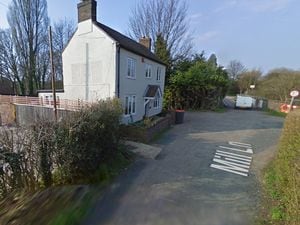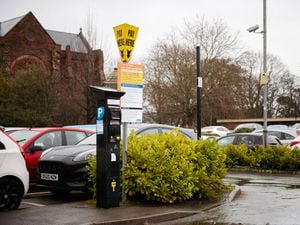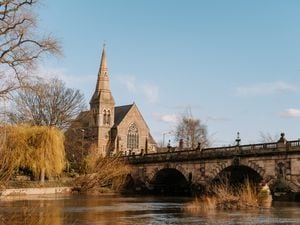Telford solar farm charges to brink of new era
Late afternoon on a cold, dark December afternoon in Telford.
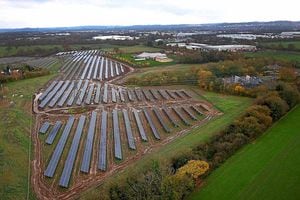
The wind is bracing, the sun is setting already. It seems strange to think that the town stands on the brink of a bold new era in solar energy.
But all being well, in a couple of weeks or so, the new solar farm in Hadley will be plugged into the National Grid, its 15,000 glittering panels ready to generate enough energy to power 800 homes.
See also: Poll: Should agricultural land be allowed to be used for solar farms?
"I feel really excited," says Councillor Shaun Davies, Telford and Wrekin Council's cabinet member for economic projects, and a driving force behind the project.
"We're only the second council in the country to produce a solar farm, and it will reduce our carbon footprint."
The site in Wheat Leasows will be the biggest of its kind anywhere in the Midlands. And if the council's projections hold water, it is a win-win situation for all concerned. With the closure of the Ironbridge power station looming, it will give Shropshire a new, pollution-free source of energy, while generating Telford & Wrekin Council extra income from the National Grid.
"This project demonstrates our commitment to show community leadership and to be a greener council," adds Councillor Davies, who is the Labour member for Malinslee on the council.
However, while the development at Hadley might only be the second local authority-backed scheme in the country, it will also be one of the last to benefit from the generous subsidies which have made solar energy such an attractive option for landowners across Shropshire.
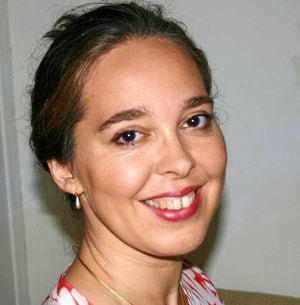
Leonie Greene of the Solar Trade Association says it is a myth that solar farms displaced food production.
"Good practice in the industry now routinely combines solar with existing farming activities, such as sheep grazing or pheasant rearing," she says.
"Typically, less than five per cent of the land on which a farm is sited is taken up by fixings, leaving 95 per cent available for other uses.
"People think they are going to take over the countryside, but at the moment the amount of land taken up by solar farms is tiny, it's about 0.02 or 0.03 per cent of the available agricultural land.
"Golf courses take up around two per cent. Even if we got to the amount of solar energy we would like, and the industry was delivering 10 gigawatts of solar farms by 2020, this would take up just 0.1 per cent of agricultural land, less than non-food crops such as linseed."
She argues that as Britain's unpredictable weather creates greater risks for farmers dependent on crop yields, solar energy can help them stabilise their incomes.
Renewable energy subsidies for new large-scale solar farms will end in April next year, and from January onwards farmers who use fields for solar panels will not be eligible for payments through the Common Agricultural Policy. The Department for Communities and Local Government has also amended planning rules to ensure that whenever possible solar installations are not put in fields that could be used for farming.
Environment Secretary Liz Truss says the measures are necessary to ensure that they prevent the solar industry taking over Britain's prime farmland. She points out that Britain has 618,000 acres of south-facing commercial roofspace which would be a more appropriate location for solar energy production that much-needed farmers' fields.
She says: "English farmland is some of the best in the world and I want to see it dedicated to growing quality food and crops. I do not want to see its productive potential wasted and its appearance blighted by solar farms. Farming is what our farms are for and it is what keeps our landscape beautiful."
Her statement is music to the ears of Peter van Duijvenvoorde, chairman of the campaign group Save South Shropshire Countryside, which has become concerned about the burgeoning number of planned solar farms.
In September this year, it was revealed that planners were looking at 10 separate applications across Shropshire and Mid-Wales for fields to be turned into solar farms.
This year, the Save South Shropshire Countryside has successfully objected to major applications at Whitton, near Ludlow, and Acton Scott, near Church Stretton, which were turned down by Shropshire Council planners, and this week it was revealed that energy firm TGC Renewables has dropped plans for a 25-acre farm close to Whitton Court at Whitton, near Ludlow, due to "site constraints".
David Wright, Labour MP for Telford, says: "It is good renewable energy but also an income generator, particularly in the case of Telford & Wrekin Council which is the local authority."
However, Mark Pritchard, the Conservative MP for the neighbouring Wrekin constituency, is unimpressed by the council project.
He says: "This is a council that has increased the council tax in three out of the last four years, and yet it is spending £4 million of taxpayer's money on something really that, if there is a market and demand, the private sector should be stepping in to that, and not hard-pressed taxpayers."

Businessman and countryside campaigner Mike Greene is not convinced that solar energy will ever be economically viable, and says the motive for most councils is not the environment, but the subsidies available from the Government.
"When you look at the economics, the reality is that most renewables just don't work, and are unlikely to ever work, if you take away the subsidies that come with setting them up," he says.
"Many councils are keen to invest in solar energy because it's seen as an easy win.They're not driving these plans forward because of any green credentials, by slapping down solar panels they can gain access to Government funding and low-interest loans." Mr Greene, who appeared on the Channel 4 series The Secret Millionaire, says the subsidies have to be huge because solar energy still isn't viable without them.

